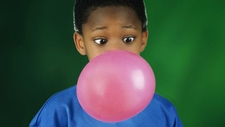Volume

TEKS Objective
The student is expected to measure, compare, and contrast physical properties of matter, including size, mass, volume, states (solid, liquid, gas) temperature, magnetism, and the ability to sink or float.
Essential Understanding
The student knows that matter has physical properties and those properties determine how matter is classified, changed and used.
Science Background
Volume: NASA (Website) - Describes how to measure the volume of different-shaped solids.
Signature Lesson
How Much Water Is in a Fruit? BioEd Online (website and video) – Students use displacement to measure the volume of an orange.
How Much Water Is in a Fruit? - Download the Lesson
BioEd Online, www.bioedonline.org
How Much Water Is in a Fruit? - Watch how to teach the lesson
BioEd Online, www.bioedonline.org
- Supporting Lessons
- Extensions
- Assessment Ideas
- Literature Connections
- Related
TEKS - Additional Resources
Supporting Lessons
Using Your Marbles, Volume Measurement and Reporting: Ohio State University (PDF) – Students use graduate cylinders with water to measure the volume of solid objects that sink (marbles).
Elaboration Lessons and Extensions
Measurement: Jefferson County Schools (PDF) - Series of activities, which could be set up as stations around the classroom, that use a variety of methods to measure volume and to compare volumes.
Measurement
Center for Innovation in Education, www.center.edu
Assessment Ideas
Show the class an empty container. Have students describe two different ways in which they could measure the volume of the container. Possible answers include: fill the container with water and then pour the water into a graduated cylinder or beaker to measure; use a mathematical formula for the volume of a cylinder or a cube (see Science Background); place the container in a larger container of water and measure the displaced volume; fill the container with water, weigh it and use the weight/mass to estimate the volume of water that the container will hold.
Literature Connections
Matter. Wilkin, Fred (ISBN: 978-0516012841)
Matter: See It, Touch It, Taste It, Smell It. Stille, Darlene (978-1404803442)
Matter. Walker, Sally (ISBN: 978-0822528449)
Additional Resources
States of Matter Unit: Morton (IL) District 709 (PDF) - Extensive, two-three week unit on the properties of matter.
States of Matter Unit
Morton (IL) District 709, http://webs.morton709.org
TEKS Navigation
Grade 4
Need Assistance?
If you need help or have a question please use the links below to help resolve your problem.

Comments